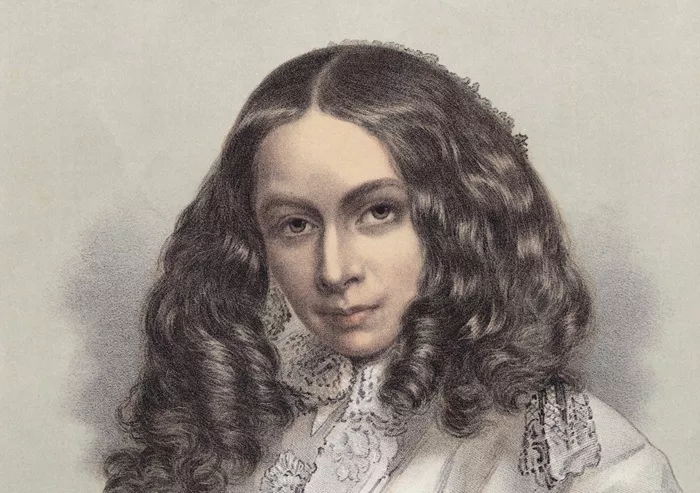Welcome to Poem of the Day – A Child Asleep by Elizabeth Barrett Browning
Elizabeth Barrett Browning is one of the most famous poets of the Victorian era. Her poems are full of deep emotion and strong imagery. One of her lesser-known but beautiful poems is A Child Asleep. In this article, we will explore the poem in detail and explain its meaning in simple terms.
A Child Asleep Explanation
Overview of the Poem
A Child Asleep is a gentle and emotional poem. It talks about a child who is sleeping. The poet looks at the child and thinks about the beauty and peace of sleep. At the same time, she reflects on life, innocence, and the soul.
Structure and Style
The poem has a soft, flowing rhythm. The lines are musical and smooth. The poet uses simple language, but the meaning is deep. There are many images of nature and purity. The poem is written in stanzas with a calm and reflective tone.
Line-by-Line Explanation
Let us look at the poem in parts and explain what each section means.
Stanza 1: The Sleeping Child
The poet describes the child lying asleep. The child looks peaceful and quiet. The sleep is deep, and nothing disturbs it. The poet compares the sleep to a holy or sacred moment. It feels like the child is part of something divine.
“How he sleepeth! having drunken
Weary childhood’s mandragore…”
Here, the child is so tired from playing and being active that he has fallen into a deep sleep, almost like a magical potion (mandragore) has caused it.
Stanza 2: The Beauty of Innocence
The poet speaks about how pure and innocent the child is. She uses images of angels and heaven to show this purity. Sleep becomes a symbol of peace and holiness.
“Soft and smooth as any singing
Of the bee upon the wing…”
The child’s sleep is compared to the soft buzzing of a bee, showing how gentle and calm it is.
Stanza 3: A Moment of Stillness
In this part, the world seems to stop. The room is quiet, the child is still, and time feels frozen. The poet observes how everything seems to pause when a child is asleep.
“All the thoughts of all the people
On the earth, and in the air…”
This shows that the moment is so powerful that it affects even thoughts and the air around the child.
Stanza 4: A Glimpse of Heaven
The poet wonders if the soul of the child, while asleep, is visiting heaven. Sleep becomes more than rest. It is a door to something spiritual.
“Are you dreaming of the angels
Who are dreaming too of you?”
She asks if angels are dreaming of the child as the child dreams of them. This creates a feeling of connection between earth and heaven.
Stanza 5: A Mother’s Love and Fear
The poet also hints at the fear a mother feels. Looking at the sleeping child, a mother may feel joy but also fear of loss. The beauty of the moment is mixed with the sadness of knowing how fragile life is.
“Do not wake him, let him slumber,
There is music in his rest.”
This shows the deep love and protectiveness the poet feels for the sleeping child.
Themes in the Poem
Several important themes run through the poem:
1. Innocence
The child is a symbol of pure, untouched innocence. Sleep highlights this quality.
2. Peace and Rest
Sleep is shown as a peaceful state, almost like a holy experience.
3. Love and Protection
The poet shows how much love and care surrounds a sleeping child.
4. Life and Death
There is a quiet sense of fear. The poet compares sleep to death. This brings a feeling of sadness but also respect for life.
Imagery in the Poem
Elizabeth Barrett Browning uses gentle and lovely images:
-
The child is like a flower.
-
Sleep is like music or a soft song.
-
Angels watch over the child.
-
Time and thoughts pause around the child.
These images make the poem peaceful and full of wonder.
Tone and Mood
The tone is gentle, loving, and thoughtful. The poet is calm but emotional. The mood of the poem is peaceful, with a touch of sadness. It makes the reader feel both joy and reflection.
Conclusion
A Child Asleep is more than a description of a child sleeping. It is a meditation on life, innocence, and the soul. Elizabeth Barrett Browning uses simple words and soft images to express deep love. The poem reminds us how beautiful and fragile life is. It encourages us to pause and appreciate the quiet, tender moments.
Whether you are a parent, a poet, or simply someone who loves literature, this poem speaks to the heart. It reminds us that sometimes the quietest moments say the most.


